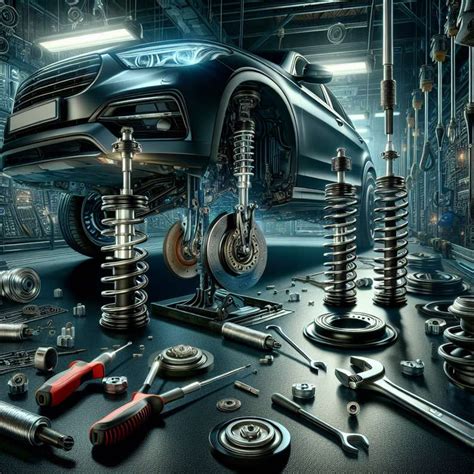Improve Your Car's Handling: A Shocks & Struts Guide
Your car's handling isn't just about speed; it's about control, safety, and the overall driving experience. A significant factor influencing your car's handling is the condition of your shocks and struts. These crucial suspension components directly impact your vehicle's stability, responsiveness, and comfort. This guide will explore the roles of shocks and struts, signs they need replacing, and the benefits of upgrading them for improved handling.
What are Shocks and Struts?
Both shocks and struts are vital parts of your vehicle's suspension system, responsible for damping the up-and-down movement of your wheels. However, they differ in their design and function:
-
Shocks (Shock Absorbers): These are cylindrical devices that primarily control the rebound and compression of the springs. They don't support the weight of the vehicle; their job is to dampen the oscillations created by bumps and uneven road surfaces. Think of them as controlling the bounce.
-
Struts: Struts serve a dual purpose. They act as both a shock absorber and a structural support for the vehicle's weight. They're integrated into the suspension strut assembly, combining the shock's damping function with the spring's weight-bearing capacity. They control both the bounce and the weight distribution.
Many vehicles utilize struts in the front and shocks in the rear, but this can vary depending on the make and model. Consulting your owner's manual is always the best way to determine the specific setup of your car.
Signs Your Shocks and Struts Need Replacing
Ignoring worn shocks and struts can significantly compromise your safety and handling. Here are some key indicators that it's time for a replacement:
-
Excessive Bouncing: After going over a bump, does your car continue to bounce excessively? This is a classic sign of worn shocks or struts.
-
Poor Handling: Do you experience a loss of control, especially during cornering or braking? Worn suspension components can lead to instability and reduced responsiveness.
-
Nosediving During Braking: If your car dips significantly when you brake, it indicates that your front shocks or struts are likely worn.
-
Leaking Fluid: Check your shocks and struts for any signs of fluid leaks. This is a clear indication of internal damage and the need for replacement.
-
Unusual Noises: Knocking, clunking, or squeaking sounds coming from your suspension system are often a sign of worn or damaged components.
-
Uneven Tire Wear: Premature or uneven tire wear can be a result of suspension problems, including worn shocks and struts.
How Replacing Shocks and Struts Improves Handling
Replacing worn shocks and struts with new ones, or even upgrading to performance shocks/struts, offers significant improvements in handling:
-
Enhanced Stability: New shocks and struts provide better control over body roll, reducing sway during turns and enhancing stability at higher speeds.
-
Improved Responsiveness: Your car will react more quickly and precisely to steering inputs, providing a more confident and engaging driving experience.
-
Reduced Braking Distance: By minimizing nosedive during braking, new shocks and struts help maintain tire contact with the road, leading to shorter stopping distances.
-
Increased Comfort: New shocks and struts significantly reduce the jarring effect of bumps and potholes, resulting in a smoother, more comfortable ride.
What Type of Shocks and Struts Should I Choose?
This depends heavily on your driving style and preferences.
-
OEM (Original Equipment Manufacturer) replacements: These are direct replacements for your existing shocks and struts, offering reliable performance and a balance between comfort and handling.
-
Performance Shocks and Struts: These are designed for improved handling and responsiveness, often at the expense of some ride comfort. They're ideal for enthusiastic drivers who prioritize performance.
-
Upgraded Shocks and Struts for Specific Applications: There are specialized shocks and struts for off-roading, towing, or racing, each designed to optimize performance in those specific conditions.
Always consult a qualified mechanic or your owner's manual to determine the appropriate type of shocks and struts for your vehicle.
How Much Does it Cost to Replace Shocks and Struts?
The cost of replacing shocks and struts varies considerably depending on the vehicle, the type of parts used, and labor costs. Expect to pay anywhere from a few hundred dollars to well over a thousand, depending on factors like vehicle type and location.
Can I Replace Shocks and Struts Myself?
While it's possible to replace shocks and struts yourself, it's a complex job requiring specialized tools and mechanical expertise. Improper installation can lead to safety hazards and further damage to your vehicle. It's generally recommended to have a qualified mechanic perform this task.
This article provides a comprehensive overview. Always consult your vehicle's owner's manual and a qualified mechanic for specific advice related to your car's make and model. Remember, prioritizing your car's suspension system ensures safer and more enjoyable driving.

